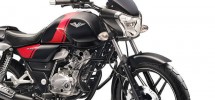When it comes to driving on our roads, you need to be able to do so safely. One way in which you can do this is by being able to meet the eyesight requirements for driving or riding a vehicle. It’s the law so obeying the eyesight rules is important.

What are the Eyesight Rules?
When it comes to driving a vehicle, there are four key eyesight rules that you need to satisfy. These include:
- You can read a number plate made after 1 September 2001 from a distance of 20 metres.
- If you cannot see a number plate without wearing glasses or contact lenses, then you must use them every time you drive. It is the law.
- Having a keenness of vision that is at least decimal 0.5 (6/12) as measured on the Snellen scale. This means that you the driver can read characters from a distance of 6 metres compared with someone with normal vision who can see them from 12 metres.
- Your horizontal vision is at least 120 degrees. This means that when you look directly ahead, you can see things up to 60 degrees on either side without moving your head or eyes.
The rules apply to both eyes together. However, if you only have sight in one eye, then it applies to the one eye only.
Are There Any Exceptions?
The eyesight rules do not apply to all drivers. The rules are slightly different for bus and lorry drivers. The first difference relates to visual acuity. This must be at least 0.8 (6/7.5) measured on the Snellen scale. Unlike car and motorcycle drivers this only has to apply to the driver’s best eye. For the other eye, it can be at least 0.1 (6/60). If they wear glasses then to reach this standard they must have a corrective power of not more than (+) 8 dioptres. The other difference is that bus and lorry drivers should have a horizontal vision of at least 160 degrees with at least 70 degrees either side and 30 degrees up and down. Also, they mustn’t have any defects present in their vision within a radius of 30 degrees of the centre.
Practical Eyesight Test
When you go for your driving test, you must be able to correctly read the number plate on a stationary vehicle at a prescribed distance. For new-style number plates, the distance is 20 metres and 20.5 metres for older number plates. The examiner will have you read another number plate if you cannot read the first. If you are still not able to read it, they will measure out the exact distance from a number plate. If despite this, you still cannot read the number plate you will fail your driving test. Your examiner will then let the DVLA know as they will take away your licence. When you reapply for your licence, the DVLA will want you to undergo and pass an additional eyesight test. Only if you pass it, will you be able to retake your practical driving test.
Letting DVLA know
Even if you meet the eyesight rules for driving when you take your test that is not the end of the matter. You need to meet the rules each time you drive. If you don’t, you risk prosecution if you come to the attention of the police for any reason. If you have any problems that affect your eyes, it is important that you tell the DVLA.
For more information, visit: Driving Vision Optician.




